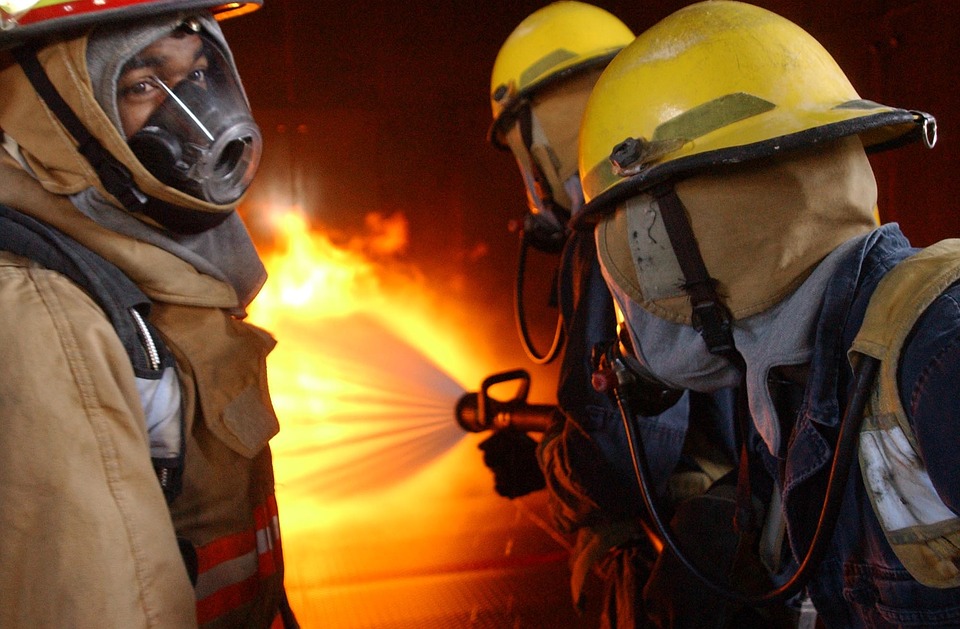For fire fighters the world over, the helmet has always been one of the most important part of their gear and not just for its safety quotient. It is a representation of battles fought, fires defeated and lives saved. The sooty, dented fire safety helmets may seem like an eyesore, but for the firefighter it is a source of great pride.
There was a time when fire safety helmets were of sole interest to firemen. But with more and more organisations now focusing on ensuring fire safety, these headgears are now also bought and kept by private organisations. In many cases an establishment may be legally required to do so.
Safety helmets are not incidentally just confined to a fire site. These fire safety helmets also find usage in places where we need heavy protective gear for the head, like a construction site. Similarly, firefighters are also often called up for special purposes like search and rescue operations in calamities or accidents.
- Fire station
- Private firefighting units
- Oil wells
- Refineries
- Construction sites
- Rescue operations, like floods
Why Do We Need Fire Safety Helmets?
A helmet is an essential part of a firefighter’s protective gear. In a hazardous fire site, it can save lives. The helmet here plays multiple roles, some of which are:
Protection from fire: One of the major job requirements for a firefighters, of course, to go into dangerous fire sites. Their gear must therefore, be completely fireproof. But, while we can cover the body with fireproof clothes, gloves and the feet with boots, it is impossible to completely cover the face. This is where helmets come in. It covers the head and its brim ensures some protection for the face. Made of fireproof material, a helmet is thus essential in protecting the head from fire.
Protection form falling objects: Fire is not the only danger at a fire site. With fire weakening the structure of a building, there is an added danger of falling objects, such as roofs, shelves, pillars, beams and so on. A firefighter is highly exposed to the dangers of a fatal accident caused by such falling objects.
In such a situation, it is essential that we ensure a minimum deterrence for the head, one of the most important and vulnerable organs of the body. The hard helmet is designed for just that. In fact, safety helmets are also used in construction sites for exactly this purpose.
Protection to the neck: It is not just the head that a helmet protects. Some helmets also have a flap that covers the neck, another exposed and vulnerable part of a firefighter’s body. The flap covers the neck from fire as well as dangerous draft.
Communication: Some modern helmets are also equipped with a communication system. This is a hands-free system that can be vital in large-scale or complicated fire rescue operations. The hands free system also frees the firefighter from holding and communicating through other systems that can be awkward and uncomfortable.
How To Choose Fire Safety Helmets?
Given their importance, it is also essential that we buy a helmet carefully. Some of the essential factors to consider here are:
Material: Helmets are made of a range of materials, from leather to fibreglass. Some people have certain preferences, such as leather. In some cases, there could be regulations on a certain type of material. So, decide on the material before you make a choice.
Lightweight: The last thing you want is a heavy helmet on your head. A lightweight helmet is easy to carry and gives the firefighter the freedom to perform the job at hand. Plus, lightweight means that the wearer is more likely to wear it, reducing the chances of any risk.
Fit: A helmet should be snug fit, neither too loose, nor too tight. A loose helmet can be knocked off and a tight helmet will cause discomfort, eventually reducing the chances of the wearer putting it on. So it’s important to ensure that the helmet has the right fitting or can be adjusted for a right fit.
Chin strap: A chin strap gives the helmet added security, preventing any chances of it knocking off. Modern helmets have snug and comfortable chin strap.
Certification: Standards for helmets are clearly laid down by the BIS. This mentions the size and minimum capabilities that each helmet must have. So, always check for compliance with ISO standards when selecting fire safety helmets.



